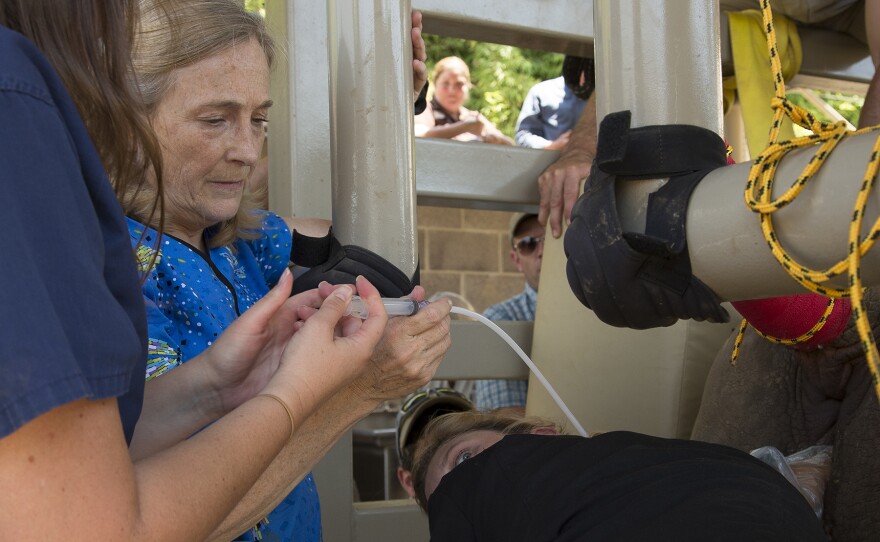Researchers at the San Diego Zoo Institute for Conservation Research announced Tuesday that they have made their first attempt to artificially inseminate a southern white rhinoceros, in an attempt to save the critically endangered northern white rhino.
Only three northern white rhinos currently remain in the world.
Barbara Durrant, director of reproductive sciences at the institute, called it a historic procedure. It could be several weeks before it is known whether the July 6 procedure on 9-year-old Amani at the zoo's Safari Park was successful.
"The sperm had excellent motility, the procedure went very well, the rhinos involved are doing great and now we wait and hope for a pregnancy," Durrant said.
If artificial insemination proves successful and a calf is born, zoo officials hope to use the process to have a female southern white rhino carry a northern white rhino to term. The goal is to produce a new member of the northern species in 10-15 years.
First, scientists need to sequence the genome of the northern white rhino to clarify the extent of genetic divergence from its southern relative.
Another step requires conversion of cells preserved from a dozen individual northern white rhinos in the San Diego Zoo Institute for Conservation Research's Frozen Zoo to stem cells that could develop into sperm and eggs — a process successfully begun in the laboratory of Jeanne Loring of The Scripps Research Institute.

Amani is one of six female southern white rhinos that were relocated to the Safari Park from private reserves in South Africa in November 2015, to serve as potential surrogates for a northern white rhino embryo in the future.
The procedure provided an opportunity for researchers to learn more about the intricacies of rhino reproduction, and to learn whether Amani is able to conceive and carry a calf to term.
"It is very important for Amani and the other five rhinos to get pregnant when they're young," Durrant said.
"Just like human females and other mammals, the older they are, the more difficult it can be to conceive," she said. "Pregnancy is not only important for the individual rhino's reproductive health, but also when we make northern white rhino embryos, we would never risk putting a precious northern white rhino embryo into the uterus of a female who was not proven to be reproductively fit."
Zoo officials said they will begin doing ultrasound scans on the rhino in the next two weeks, examining both uterine horns for evidence of a fetus, which may not be visible until it is several weeks old. The rhino's ovaries will also be examined by ultrasound, and her hormone levels will be monitored for indicators of pregnancy.
A rhino's gestation period is 16 months.
If successful, the procedure could also be used in the future on critically endangered Sumatran and Javan rhinos. Even if the procedure doesn't work, the data collected leading up to this attempt will be valuable for future work, according to zoo officials.





